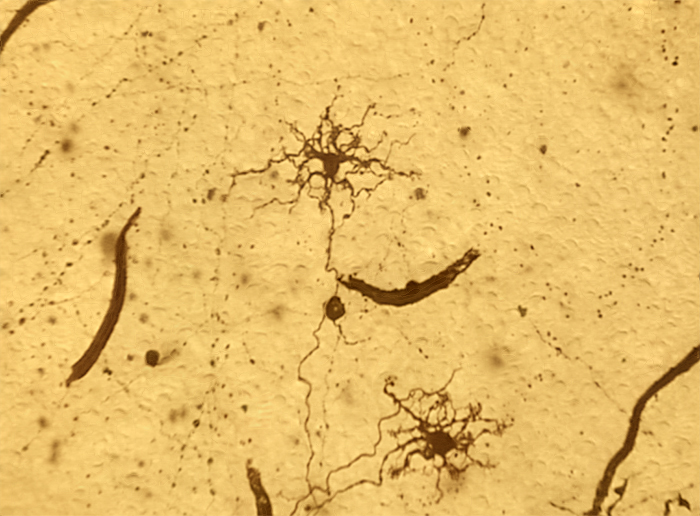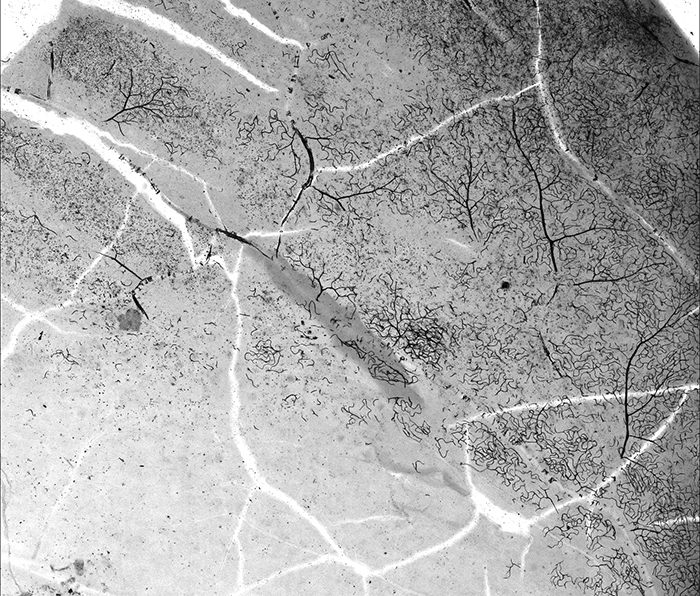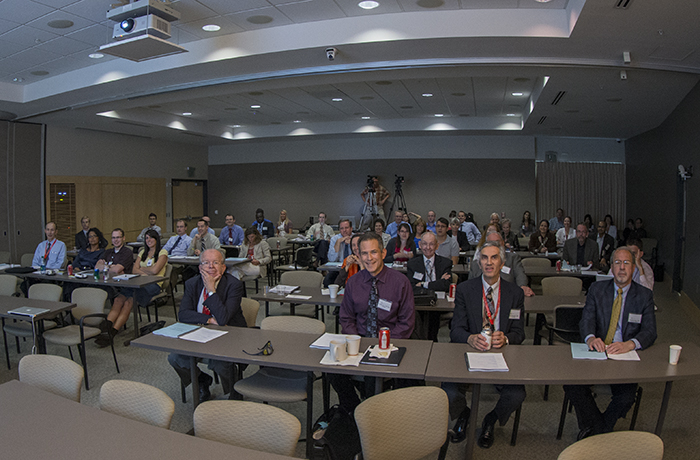I gave a talk today to a bunch of the clinical faculty, residents and medical students at the Moran Eye Center (pic at the bottom) and included some old histological techniques called the Golgi Method. The Golgi method, originally called “the black reaction” was developed by Camillo Golgi to study tissues from the nervous system. Interestingly, the actual mechanism of how silver gets into a subset of neurons is still unknown to science despite the technique being developed in 1873.
While Golgi used the stain to study a vast amount of histology, it was Santiago Ramón y Cajal that really made the technique famous for his phenomenal studies of the nervous system anatomy that ultimately resulted in the development of the neuron doctrine.
The image above shows two horizontal cells (thank you Helga Kolb for the ID) with their dendrites sticking up above the cell body. Axons from them can be seen leaving the cell going towards the bottom, center of the image. The images here illustrate the use of the Golgi technique in human retinal tissue and came from a larger Golgi preparation seen below at an intermediate magnification and again in the image below that showing the whole slide.
This Golgi prep is a flat mount preparation where the retina is flattened against glass slide. The photoreceptors are at the back and the ganglion cell side is on the superficial side. Lots of bipolar cells, horizontal cells and vasculature as well as a number of glial cells surrounding blood vessels can be seen in this preparation. The image above is a small subset of the lower magnification image below.
This dataset was scanned in with a scanning stage microscope at multiple planes throughout the tissue, then focus stacked to get as much of the image in focus as possible. If this sort of thing really turns your crank, you can get the full resolution .tif version of this image here (its around 400MB) and explore it.
The auditorium of the Moran Eye Center today with our clinicians who came to hear some basic research talk in addition to the clinical cases.



